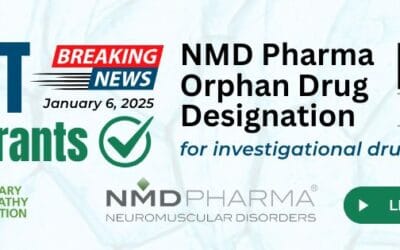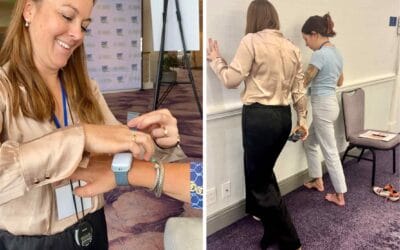SORD: A Lesson in Repurposing Drugs to Treat Hereditary Neuropathy
GUEST AUTHOR: DAN KNAUSS
SORD is a gene that has received a lot of attention lately. International research on SORD has increased greatly since the discovery in 2020 that its mutation causes the most common autosomal recessive form of CMT2 and the overlapping category of distal hereditary motor neuropathy (dHMN). CMT2 and dHMN are under-diagnosed rare disease categories, and up to nearly 10% of the cases that fall within them may be SORD-related.
The onset of symptoms occurs around age 17 on average, but symptoms may present themselves in the first years of life or as late as one’s forties. The symptoms common to all cases are muscle weakness and wasting in the arms and/or legs. Leg muscles are affected in 98% of known cases.
Stephan Züchner, MD, PhD, is the Chairman of the genetics department at the University of Miami’s Miller School of Medicine and leads the CMT genetics effort for the Inherited Neuropathy Consortium. His group led an international team to the discovery of the role of the SORD gene in CMT. Dr. Züchner predicts that “SORD neuropathy will represent one of the few examples of a treatable hereditary neuropathy” because the mechanism of its harm is likely manageable with existing medication for diabetes.
SORD and the Harm Done by Sorbitol
SORD stands for sorbitol dehydrogenase (SDH), which is the protein the gene encodes. SDH’s role is to convert sorbitol into fructose. Sorbitol is a carbohydrate and the sugar alcohol form of glucose; it is found in fruit and is used as an artificial sweetener in processed foods.
Since sorbitol is unable to cross cell membranes, it can accumulate quickly if there is no SDH available to break it down. Normally, blood sugar (glucose) is converted to sorbitol by an enzyme called aldose reductase and further converted to fructose by SDH, but this last step may not happen quickly enough to cope with the overproduction of sorbitol in uncontrolled diabetes. Sorbitol accumulation in the eyes, kidneys, liver, and nerves can do significant damage in those locations.
Thankfully, organ damage is not the typical result of SORD deficiency, but it does create sorbitol concentrations high enough to destroy the axons in nerves. Dr. Zuchner says a diabetic person may have twice the normal level of sorbitol in their system, but someone with a SORD deficiency will have 10-100 times the normal levels of sorbitol.
Excess sorbitol causes the tissue it is in to absorb water from osmotic pressure to the point that cells are severally stressed or destroyed. Taking in too much sorbitol in food, for example, can cause diarrhea in many healthy people, but a diabetic person who is hyperglycemic faces much greater risks as sorbitol builds up in the eyes or kidneys. For someone with SORD neuropathy, the damage is done mainly to the axons in motor nerves.
Inhibiting Sorbitol Production to Prevent Nerve Damage
The Miami team has also created and studied SORD deficient fruit flies (Cortese et al., 2020). These flies showed CMT-like symptoms that were reversed by drugs known as aldose reductase inhibitors (ARI). These drugs are currently not available in North America or Europe. However, clinical trials are soon planned with a new type of ARI developed by Applied Therapeutics.
Aldose reductase inhibitors reduce sorbitol levels by inhibiting aldose reductase, the enzyme that creates sorbitol from glucose. If your body can’t break down sorbitol, aldose reductase inhibitors will help reduce the amount of sorbitol being produced in your body from glucose. That is why aldose reductase inhibitors are anticipated to be a viable treatment for people experiencing neuromuscular damage due to a SORD mutation.
Diagnosing SORD Deficiency and Future Treatments
Dr. Zuchner and his colleagues are enrolling CMT patients for fast SORD screening into a research study, which will also reveal the full phenotypic (symptoms) spectrum of SORD neuropathy. Thus far nearly 100 patients have been identified with these efforts. Participants might qualify for upcoming clinical trials. Patients with a CMT2 diagnosis, negative genetic tests in the past, and where both parents did NOT show signs of CMT do qualify and should contact Allison Moore at [email protected].
Finally, Dr. Züchner is currently working on a rat model with support from the Hereditary Neuropathy Foundation to confirm the impact of SORD mutations on sorbitol levels along with treatments to suppress sorbitol production. With all these projects in motion, it’s likely we’ll soon see the first significant therapeutic treatment able to prevent a type of hereditary neuropathy from progressing.













Thank you for your research into hereditary neuropathy. These are exciting findings for us personally. We will contact you directly regarding the upcoming trials.